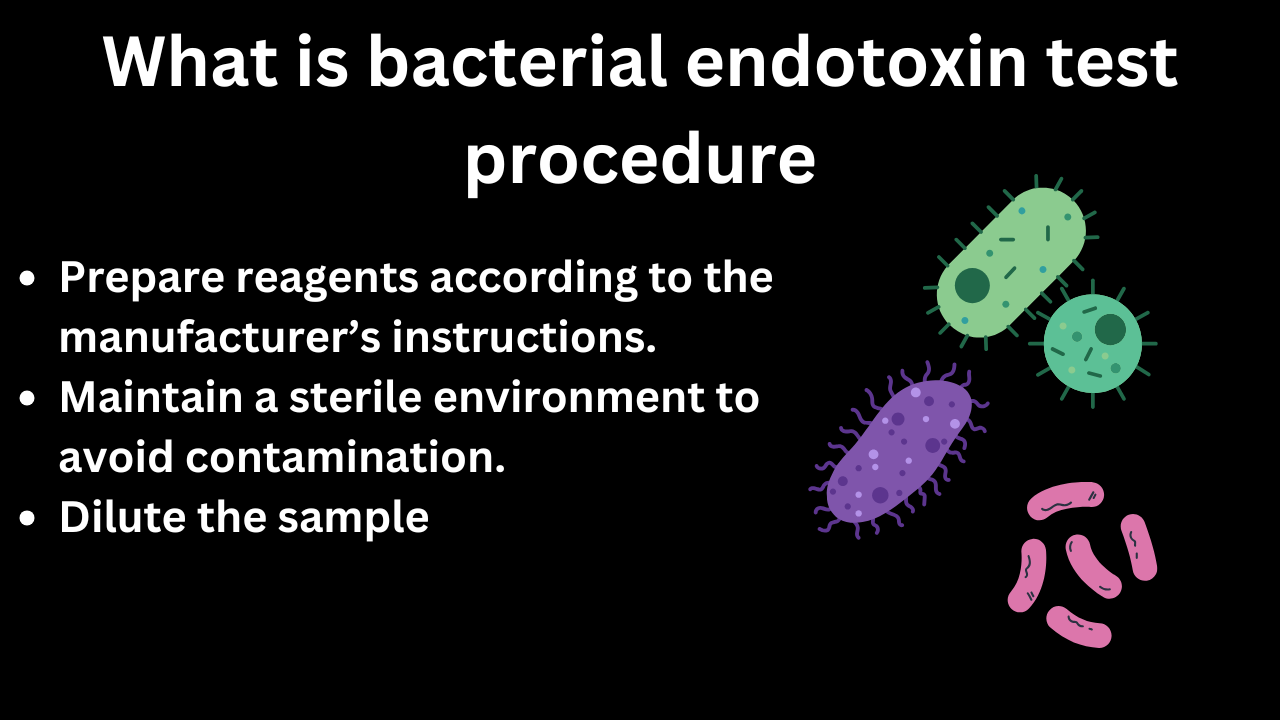The Bacterial Endotoxin Test is used to detect the presence of bacterial endotoxins, primarily from Gram-negative bacteria, medical devices, and equipments that come in contact with the bloodstream or cerebrospinal fluid. Endotoxins, also known as lipopolysaccharides (LPS), can trigger harmful reactions in the human body if present above certain thresholds.
The Bacterial endotoxin test (BET) is commonly conducted using the Limulus Amebocyte Lysate (LAL) test, which uses enzymes from the blood cells of the horseshoe crab, Limulus polyphemus. The LAL reacts with endotoxins, producing a gel or causing a color change, which is measurable.
There are three types of test used to assess the bacterial Endotoxin.
- Gel Clot Test,
- Chromogenic Test
- Turbidimetric Test
Bacterial endotoxin test procedure steps in microbiology
The Bacterial endotoxin test (BET) is commonly conducted using the Limulus Amebocyte Lysate (LAL) reagent, which uses enzymes from the blood cells of the horseshoe crab, Limulus polyphemus. The LAL reacts with endotoxins, producing a gel or causing a color change, which is measurable.
- Prepare reagents according to the manufacturer’s instructions. Maintain a sterile environment to avoid contamination.
- Dilute the sample if necessary to fall within the range of the LAL test. High endotoxin concentrations may need dilution to prevent inhibition of the reaction.
- Prepare a positive control by adding a known concentration of endotoxin standard to a test sample.
- Use endotoxin-free water or other certified endotoxin-free diluent as a negative control to ensure there is no contamination in reagents.
- Add the specific amount of LAL reagent (manufacturer’s instructions) to each sample tube, including the test sample, positive control, and negative control.
- Place the tubes in an incubator at the specified temperature (typically 37°C).
- Incubate the tubes without disturbing.
- Result
- A firm gel clot in the tube indicates the presence of endotoxins.
- Spectrophotometer is used measure the turbidity or color change in Turbidimetric Test. It Compare the absorbance or optical density values with the standard curve.
- Calculate endotoxin levels by comparing results with the endotoxin standard curve.
- Ensure results are within the limits set by pharmacopeial guidelines (e.g., USP, EP, JP) based on the product type and route of administration.
